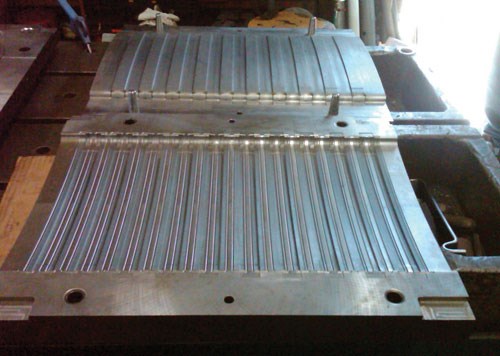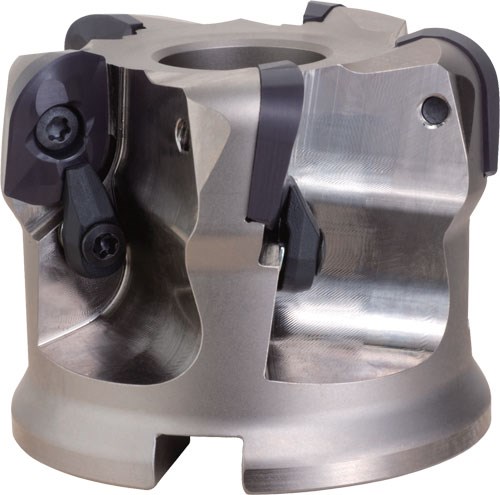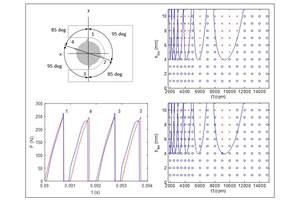Mold Shop Finds Tool Performance Outweighs Price
This moldmaker sought to reduce costs to compete with low-cost overseas manufacturers. While purchasing relatively expensive, high-performance tools might seem counterintuitive, resulting improvements in cycle time and tool life more than made up the difference.
Share





Faced with increasing competition from low-cost, overseas manufacturers, mold industry shops continually seek to reduce costs wherever possible. However, according to cutting tool manufacturer OSG Tap & Die (Glendale Heights, Illinois), overlooking the advantages of high-performance equipment in favor of lower-cost solutions is often a mistake.
One company that recently benefitted from looking beyond the price tag is Melrose Mold & Machining Co. While the shop could have saved money up-front by investing in inexpensive cutting tools, it chose instead to go with higher-performance models from OSG. The resulting improvements in tool life and throughput more than made up for the tools’ relatively higher initial cost, demonstrating that tool prices do not necessarily correlate directly with the overall cost of producing a part. In fact, the new tools reduced overall machining time on one mold by almost 95 percent.
Based in Franklin Park, Illinois, Melrose has been building precision molds for rubber products for more than 35 years. Recently, pressure from offshore competitors led company president Mark Kawczynski to consult with Darije Nikolic, president of Elmurst, Illinois-based tool supplier Abrasives Inc., to seek a solution. Mr. Nikolic quickly realized that what Melrose needed was not the lowest tooling price, but rather tools that could provide the best value in terms of cost per hole and cost per cut.
Having worked with OSG for many years, Mr. Nikolic trusted that the exclusive metallurgy, geometries and surface treatments common to that company’s line of tools could provide long-term cost savings at Melrose. One of the first projects to employ the tools at Melrose confirmed his predictions. That particular job involved a 20-cavity mold made of 4140 prehardened steel that required expedited delivery. Based on the prototype, the shop had calculated that the mold would require 170 hours to complete—an unacceptable timeframe.
Mr. Nikolic recognized that the first step to increasing efficiency was to address 3D roughing, the most time-consuming portion of the process. Instead of a conventional indexable milling cutter or solid carbide end mill, he recommended a high-feed OSG Phoenix indexable radius cutter to increase the metal removal rate. “The Phoenix can cut what was until now considered the work of ball end mills,” says OSG district manager Stevel Lauman, who worked closely with Mr. Nikolic in offering solutions to Melrose. “Its tool form is designed to increase removal rates and take stepovers similar to ball mills while maintaining the rigidity of a radius end mill.”
The tool enabled Melrose to double the cutting depth to 0.59 inch while increasing spindle speed to 758 rpm. Feed rate remained constant at 62 ipm. As a result, the roughing portion of the job was cut in half. Moreover, after roughing, the part’s finish was sufficient to practically bypass the semi-finish stage and go straight to the finishing part of the job.
To bring the core and cavities to final finish, Mr. Nikolic recommended OSG’s Exocarb-WXS, a high-feed, solid carbide bullnose radius end mill. Compared to the shop’s previous finishing tool, the proprietary WXS coating provided a higher oxidation point, harder tool surface and lower coefficient of friction. In the first finishing pass, which called for a 1/2-inch version of the tool, these features enabled the shop to reach a feed and speed of 3,250 rpm and 357 ipm at a 0.2-inch cutting depth. In the following operation, with a 1/4-inch WXS mill, the shop achieved 6,500 rpm and 357 ipm. To finish off the mold, Melrose employed a 3/32-inch, four-flute square version of the tool, which ran at 7,500 rpm and 28 ipm.
The shop had originally estimated that the new tools would cost 30 percent more than the models it typically employed. However, that ceased to be a concern when employing those tools cut production time from 170 hours to 9 hours—a 94.7-percent reduction. The largest time savings came from the semi-finishing and finishing stages. During roughing, the Phoenix mill created a relatively smooth surface with low scallops that enabled the WXS end mill to run at more than 300 ipm, significantly reducing machining time in the finishing stages. Moreover, machining time alone wasn’t the only driver of cost savings. The various Exocarb tools used in the first project still had ample tool life left to apply on the next job, a 10-cavity mold.
Although high-performance tools can cost as much as two or three times more than conventional, general-purpose cutters, they can also provide greater value by minimizing machine time and labor with faster speeds and increased throughput. Even more importantly for a shop like Melrose, such tools impact the ability to meet customer needs for quality, pricing and delivery in a demanding market characterized by low-cost, foreign competition.
Related Content
The Impact of Cutting Teeth Spacing on Machining Stability
Many cutter designs are available, and variable teeth spacing (or variable pitch) cutters can be used to influence milling stability. Let’s discuss why teeth spacing affects stability.
Read MoreForm Tapping Improves Tool Life, Costs
Moving from cut tapping to form tapping for a notable application cut tooling costs at Siemens Energy and increased tool life a hundredfold.
Read MoreThe Future of High Feed Milling in Modern Manufacturing
Achieve higher metal removal rates and enhanced predictability with ISCAR’s advanced high-feed milling tools — optimized for today’s competitive global market.
Read MoreToolpath Improves Chip Management for Swiss-Type Lathes
This simple change to a Swiss-type turning machine’s toolpath can dramatically improve its ability to manage chips.
Read MoreRead Next
5 Rules of Thumb for Buying CNC Machine Tools
Use these tips to carefully plan your machine tool purchases and to avoid regretting your decision later.
Read MoreBuilding Out a Foundation for Student Machinists
Autodesk and Haas have teamed up to produce an introductory course for students that covers the basics of CAD, CAM and CNC while providing them with a portfolio part.
Read MoreSetting Up the Building Blocks for a Digital Factory
Woodward Inc. spent over a year developing an API to connect machines to its digital factory. Caron Engineering’s MiConnect has cut most of this process while also granting the shop greater access to machine information.
Read More


























.jpg;maxWidth=300;quality=90)










